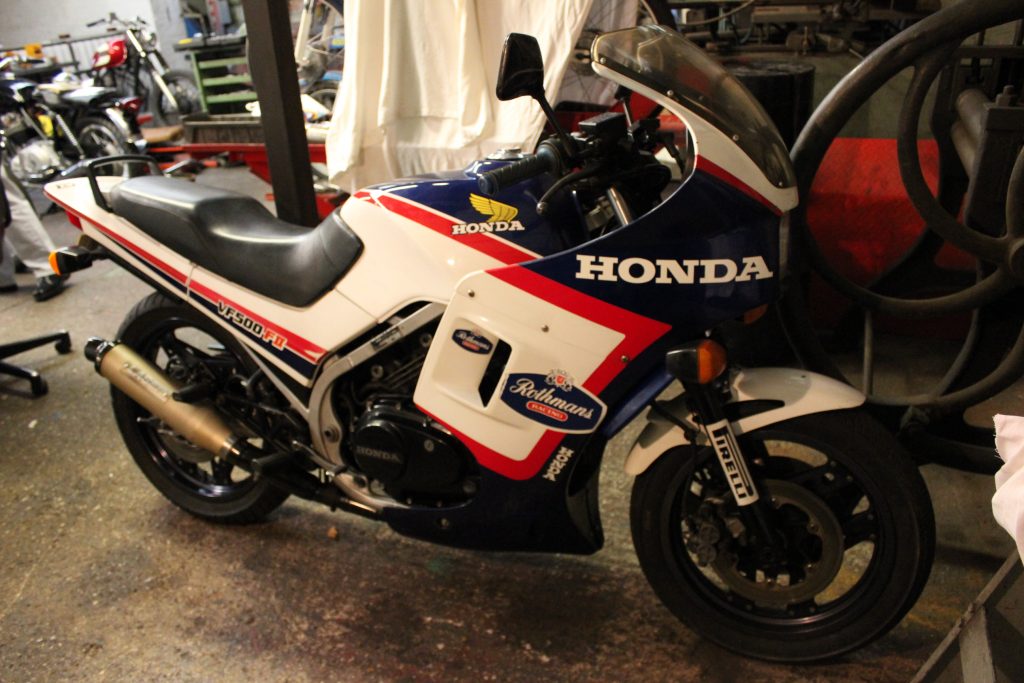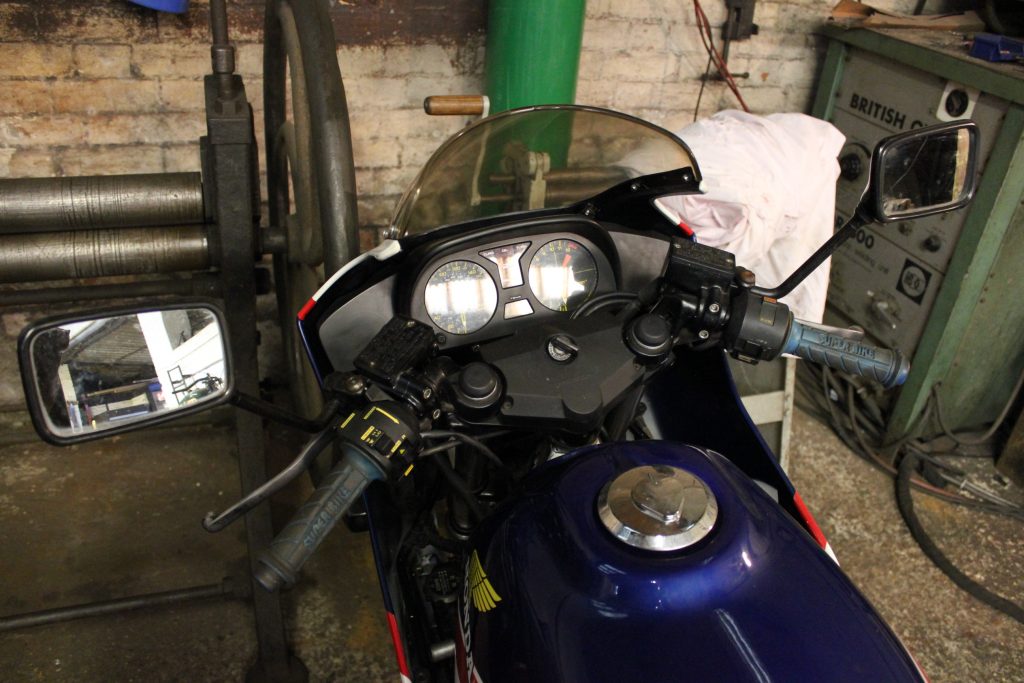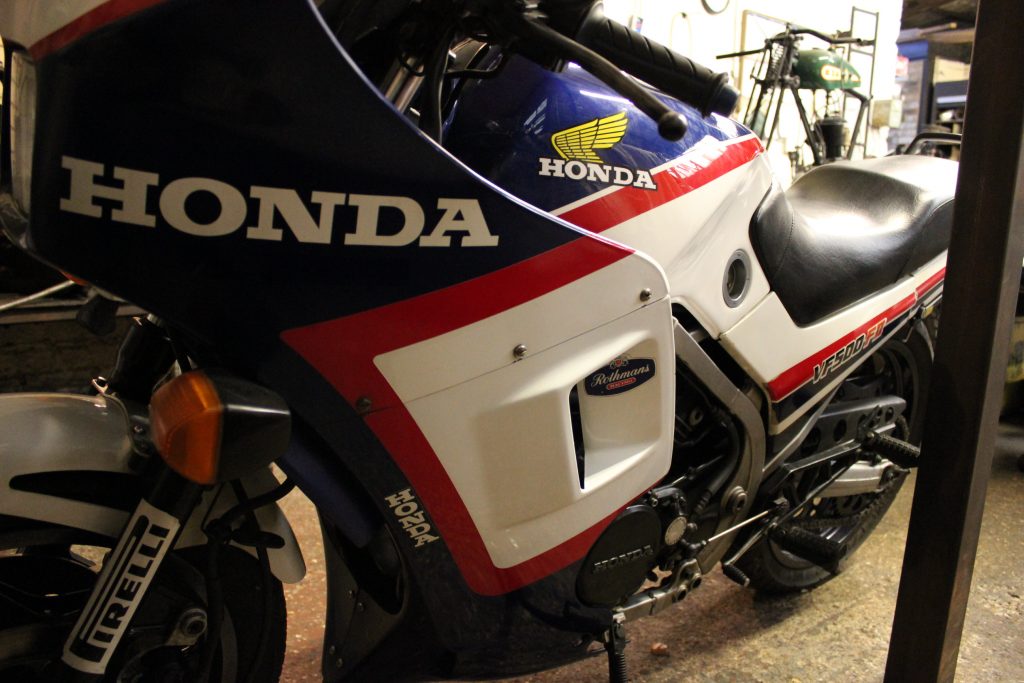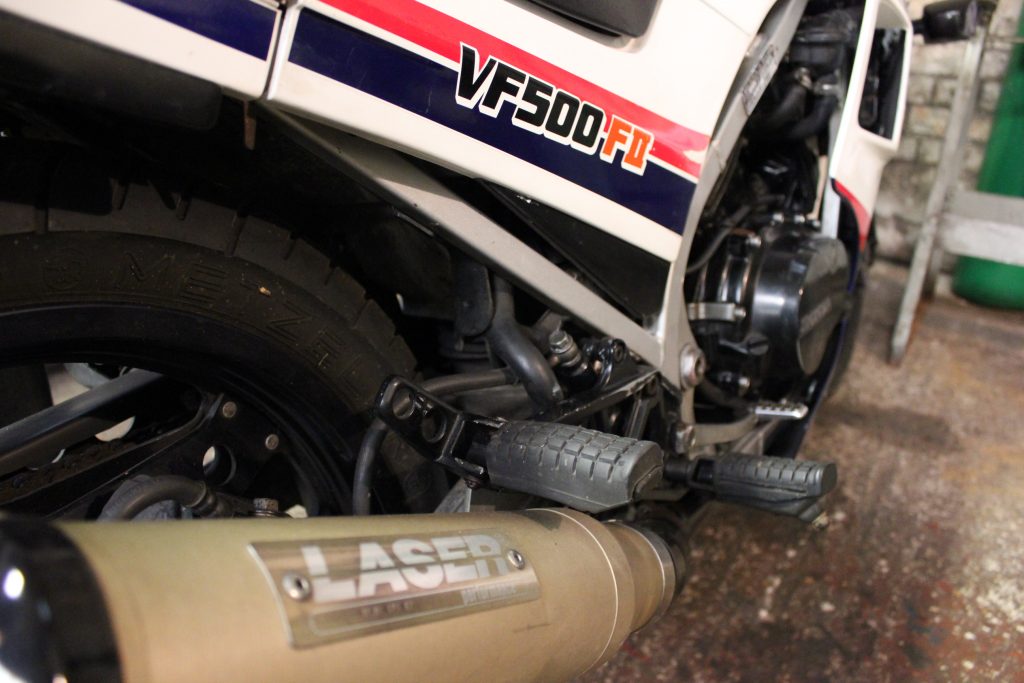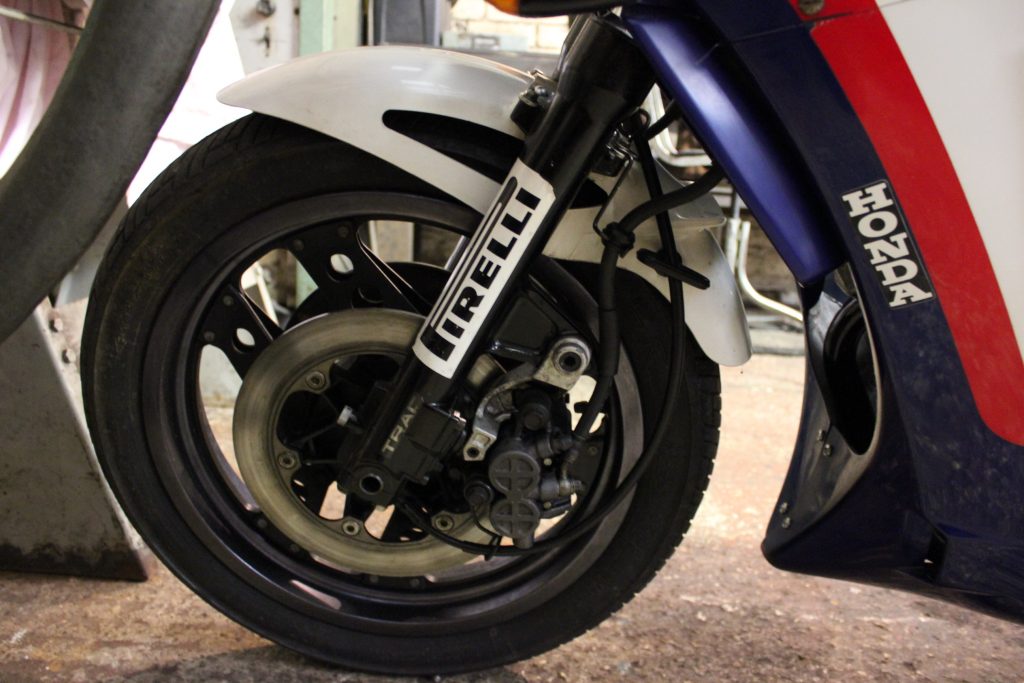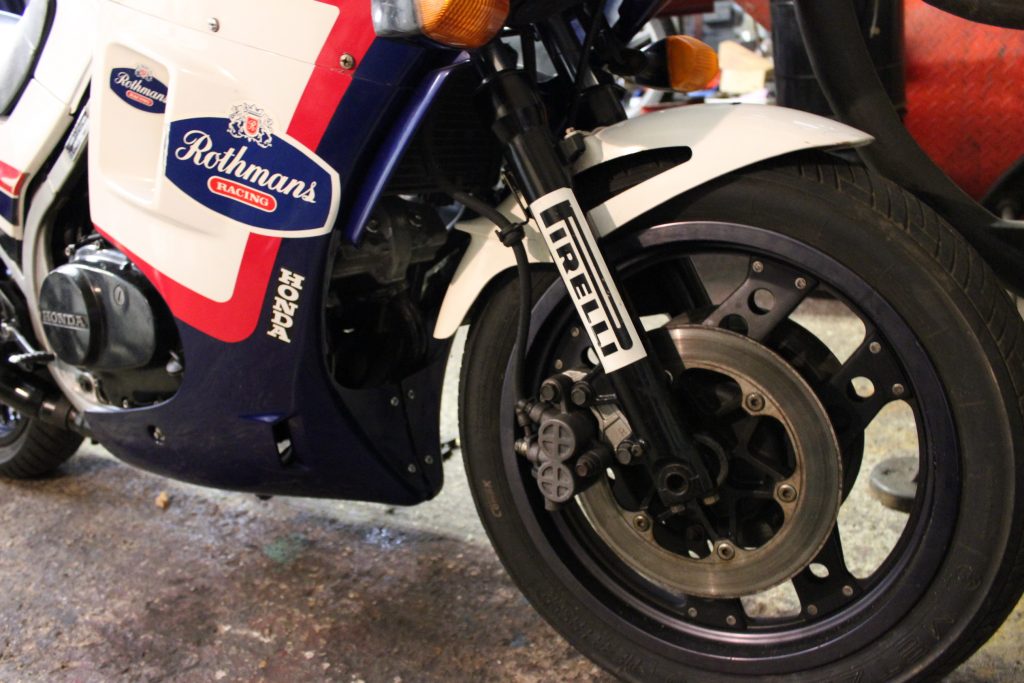A chap called into the workshop and was desperate to get rid of a bike that he purchased from new as it was stored in his rather minuscule back garden that required an addition to the back of his terraced house. I couldn’t wait to see what might be hindering the first part of the extension so I visited him promptly. Laid up beneath a tarpaulin was a ball of grease that was to be the saviour of this neglected machine. One hundred pounds secured the deal and I found a Honda VF 500F2 in the back of the transit on its way to the workshops and equipped with its paperwork.
The Honda in the past sailed through all of its mot’s due to a full service history right up to the day of laying up for a rather early retirement. The VF defiantly saw the day that it was going to be undressed from its grease protective jump suit, for the day was here. Unscrewing the sump plug let the golden fluid flow form the engine into a clean stainless pan, it was too clean to throw away so I thought it a good idea to put it back into the engine to retain provenance, only kidding, but I did put it back as it was so clean and new looking.
Decreasing was a major tack but as the stuff was removed it only revealed good clean paintwork. Hondas like all Japanese machines were never undercoated or paint primed as they were built to a profitable price and were never going to be perceived as surviving 10 years or even reaching the head heights of being classic. This Honda F2 being very rare in the UK is now considered a modern classic at 35 years old. the 35 years didn’t show on her body work, I mean the plastics, there was no plastic surgery needed on this one, she was as fresh as a daisy when the grease fell away to reveal all of the add on decals that would have advertised oils, furls, brake fluid, coolant and such. I stripped them away with the grease.
The only part of the bike that wasn’t attended to was the petrol tank as it was missing with all of its fittings. Boy these tanks are very difficult to find in the UK as there were so few Honda VF 500s sold in this country. They were mainly aimed at the US market, although there was the smaller VF 400 that is mainly aimed at the Japanese home market. There was also the 750 that found favour in the US. The VF 500 was only manufactured for three years and came in 2 sizes, the F1 was the half faired model and the f11 was fully faired. A tank was procured unfortunately without the fuel tap and knob but this wasn’t going to hold the project up, so I decided to give the tank to my brother for a 2k paint job a plastic tank was rigged up to the bank of four carbs that nestled within the nether regions of this machine.
I would like to say, bish, bash,wallop, she started on the button but wish full thinking gave way to “shit I’ve got to take the carbs off “. This wasn’t such a big job as long as you are armed with a hot air blower to loosen up the clipped air intakes as you would have to be a titan to remove them cold or a tougher man to replace them without the hairdryer. Cooked and all removed from the aluminium intakes. A block of carbs in my hands with all of its operating tendrils removed. These being CV carbs they are quite simple to work on long as the parts are kept in order, if you are new to carbs. Don’t forget to screw the air screws home and count the amount of turns it takes, IE :2 ¾ turns. When replacing them with the spring, washer and rubber seal attached in order, screw them home lightly and back them off to the amount of turns that you originally had. I put the carbs back into the nether regions and put all the cables back into there places and linked them up to my plastic gravity feed tank, choke on, ignition on and bang! She fired up.

